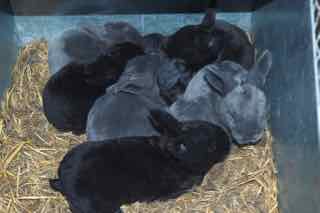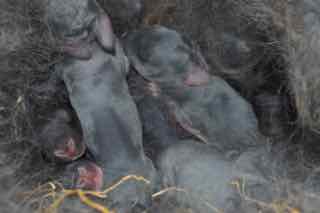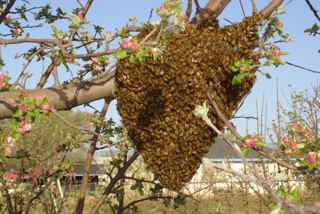Institute of Urban Homesteading
Newsletter
March 2016
Spring Spring Springing
The daffodils are in full height of their bloom, roses are leafing out, fruit trees are blooming, bees are thinking about swarming, baby bunnies abound and people are wondering when it is time to put in their annual vegetable garden. We are gently rolling into spring, thinking about where to plant what when and what new skills and adventures might be on the horizon. Please do check out our new season of offerings and join us for a class or tour to broaden you skills and perspective on what is possible in the urban environment.
.jpg)
.jpg)
.jpg)


Classes in March
We have some great classes coming up! It is not too late to register for next weekend’s classes. This Saturday learn Dormant Season Fruit Grafting hands-on and go home with a couple apple trees for your garden. An in-depth lecture on Soil Health & Science for Urban Gardeners including options for amending our East Bay clay follows in the afternoon. Mid Month we have our once a year Mosaic Making Intensive—Mosaic Making is fun and addictive. You do not need to be an artist to join and the possibilities for decorating your world are endless! This is a small class with lots of personal attention. We’ll end the month and start the new one with our great standards, Organic Gardening 101 and Natural Beekeeping.
Year Round Gardening: When to Plant What?
There is a lot of confusion about the timing of planting in the Bay Area for the mythic “year round gardening." In truth each crop has an ideal planting window and rotating beds and crops is something learned through years of experience. For bare beginners I recommend starting with one planting: Start your annual vegetable garden in April or May. April will be a little early for some crops and a little late for others, but most crops will do fine with this timing. With this one planting you will get to learn how long each crop takes to mature and finish, without worrying about when you can plant something after them. The next possibility for slightly more experienced gardeners would be two plantings: Spring and Summer. You would put your cool weather crops in the ground Feb/March and your warm season crops May/June. Some of your cool season crops will finish in time to pull them and replace them and with our growing season extending into October this is plenty of time for the warm season crops to establish and come to fruit. Lettuce can be grown succession through the entire season. Finally for the “year round” effect, you can add a third planting in late August/September to produce and finish by November. Root crops established during this time can stay in the ground for harvest through the winter, as can hardy greens like kale, chard and radicchio A fourth planting in October/November of cool season crops may overwinter, but heading crops like Broccoli and Cauliflower planted late will usually be stunted and give a small yield. Nothing should go into the ground in December or January… even if it is not cold enough to kill the plants, there is not enough daylight for them to establish and thrive.



Swarm Season is Nigh
Swarm season is upon us and beekeepers everywhere are hopeful for some healthy local bees. If you see a swarm please contact us here at IUH ASAP! If we can’t collect them we'll pass them on to another natural beekeeper. Once bees have moved into the walls or chimney of a house it is quite hard to remove them, the best time to collect them is when they are out looking for their new home. In early spring the bees increase their population to take advantage of the spring fruit bloom. The bees then crowded in their home, gorge on honey. They force the queen to leave with a portion of the population to find a new home, thus splitting the one colony into two. Swarms are not angry bee-mobs. To the contrary, a swarming bee is so full of honey it is nearly impossible for her to sting.They have neither food nor brood to defend in their temporary homeless state and are only interested in finding a new spot and getting to work. The landed swarm won’t stay long. They decide on their new location within 24-48 hours and off they fly. Back in the parent hive the bees raise a new queen from a young larvae. Whether in flight or landed, the swarm is a thing to behold.
North Bay Events & Classes: Bees & Sheep
Are you in the North Bay or do you know folks who are? April 3 we are partnering with Jim Montgomery & Groundswell to offer an afternoon tour of the animals, talk about bees and tasting. Well worth the trip, Bay Area visitors are welcome to stay over on donation basis with an RSVP. April 10 we’ll offer a beekeeping class in Boonville. Later in the season we’ll be offering a couple of small flock sheep classes near Sebastopol. Details on this and flyer forthcoming. The bee flyer is posted below, please do forward to any North Bay friends!
Seeking Berkeley Farm Tour Sites
We are still looking for a few more farm tour sites in Berkeley. Do you have veggies fruits, livestock, greywater, rainwater, pollinator gardens, alternative economics, composting toilets, vertical gardening, mushroom cultivation, natural building, re-use or other unusual features you ‘d like to share? Are you a good talker? Passionate about local foods, permaculture, urban ag? Do you know someone who is? Limited to the Berkeley city limits this year. Please send your introduction to us here at iuh@sparkybeegirl.com and include full contact info and a description of your site.
Annual Yelp Review Raffle ~ Win A Free Class!
Post a review of us on Yelp between now and April Fools Day and be entered in a drawing to receive a free class (some limitations apply). The odds to win are always fantastic, and it helps us out a lot. Our Yelp page is here http://www.yelp.com/biz/the-institute-of-urban-homesteading-oakland We’ll announce the winner in our April newsletter.
.jpg)
